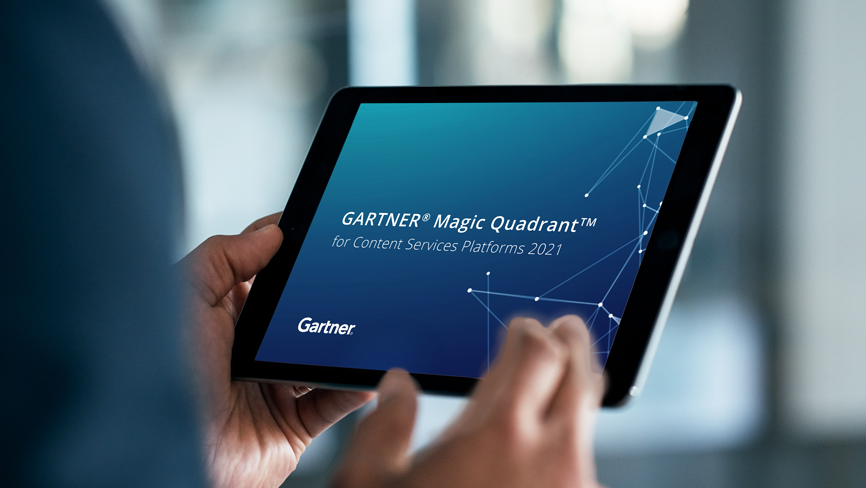The steadily rising array of software providers is rendering the search for the right IT solution more difficult by the day. Gartner’s annually published “Magic Quadrants” can help businesses navigate the landscape of options. These reports create greater transparency by offering an unbiased overview of relevant providers in the increasingly complex IT markets.
The significance of the Gartner® Magic Quadrant™
Established in 1979, Gartner Inc. is a US-based research and advisory firm that ranks the top technology vendors by market in its Gartner Magic Quadrant reports. Each year, the reports seek to offer executives and their teams practical and impartial insight into the complex structures of the leading providers. As such, the Magic Quadrants serve as a crucial decision-making resource for businesses in search of the IT solutions that are right for them.
The role of the Magic Quadrant
Gartner’s reports provide an evaluation method comprising numerous criteria that offer a broad overview showing how different software vendors in a given market compare with each other.
The reports feature a two-dimensional matrix with four quadrants, the so-called Magic Quadrant. The vertical axis reflects a company’s “Ability to Execute.” The horizontal axis reflects its “Completeness of Vision”. Each section corresponds to a specific type of vendor in the given market, which Gartner defines as “Niche Players,” “Challengers,” “Leaders,” and “Visionaries.”

The four types of technology providers across markets
Niche Players: Niche providers are particularly well suited for sector- and function-specific applications. They have the potential to deliver a better range of functionality for specialized use cases as compared with the generalists classified under “Leaders.”
Challengers: Challengers feature a broad product portfolio along with enough resources to sustain continued growth. To advance to “Leader” status, Challengers still have some ground to cover in terms of their vision and a clearly defined market direction.
Leaders: Market leaders are established companies with a large customer base and a solid market position.
Visionaries: Visionaries have a clear understanding of the direction in which the market is heading. Yet these providers generally still lack the ability to put these visions into practice.
A Magic Quadrant recognition is a major IT feather in the cap of any business
To qualify for inclusion in a Magic Quadrant, companies have to meet a set of minimum requirements with regard to functionality and market presence. That means that every company listed boasts a high degree of technical competence and a certain degree of relevance in its respective market. As such, being positioned is recognized as a mark of quality among industry professionals.
Fabasoft is a Niche Player thanks to its strong low-code platform
Fabasoft is positioned as a Niche Player in the 2021 Gartner® Magic Quadrant™ for Content Services Platforms. Gartner defines content services platforms (CSPs) as “the foundational component in an organization for the management and use of content. CSPs provide a way for employees to retrieve and work with content in a modern, seamless way across devices and organizational boundaries. As such, they are a core component of any organization’s digital workplace strategy.”
In our experience, companies are placing a premium on flexibility and agility. That makes us all the more pleased that Gartner has also recognized our strengths in the areas of low-code and business process services. With Fabasoft Business Process Cloud, we offer functional business departments in particular the opportunity to create and adapt digital processes for themselves as 'citizen developers' – with no programming knowledge and no support from the IT department.
The Magic Quadrant isn’t intended to be a report that only evaluates the leaders
Per our view, every company has unique needs, placing its own specific requirements on any prospective software. It’s too limiting to look for suitable providers in the Leaders quadrant alone.
Gartner itself clearly doesn’t view the Magic Quadrant solely as a recommendation for the leaders it names. Instead, all of the technology businesses included in each quadrant have their own specific strengths and weaknesses that need to be evaluated separately.
That means that seemingly lower-ranked providers often satisfy highly specific criteria that correspond precisely to the profile of requirements a customer needs and desires. In the search for the most appropriate IT solution, it’s certainly worth taking an in-depth look at each of the companies in the report.
Gartner Disclaimer
Gartner, Magic Quadrant for Content Services Platforms, Michael Woodbridge, Marko Sillanpaa, Lane Severson, Tim Nelms, 18 October 2021
This graphic was published by Gartner, Inc. as part of a larger research document and should be evaluated in the context of the entire document. The Gartner document is available upon request from Fabasoft.
Gartner does not endorse any vendor, product or service depicted in its research publications, and does not advise technology users to select only those vendors with the highest ratings or other designation. Gartner research publications consist of the opinions of Gartner’s research organization and should not be construed as statements of fact. Gartner disclaims all warranties, expressed or implied, with respect to this research, including any warranties of merchantability or fitness for a particular purpose.
Gartner and Magic Quadrant are registered trademarks of Gartner, Inc. and/or its affiliates in the U.S. and internationally, and are used herein with permission. All rights reserved.




